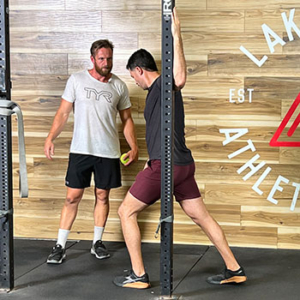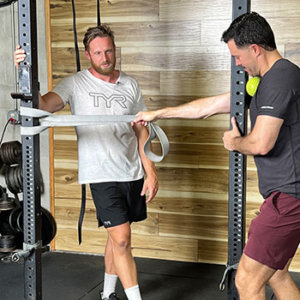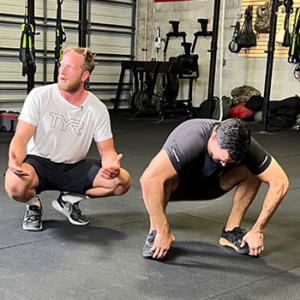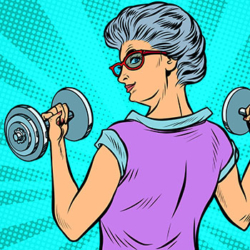 Humans move. It’s what we do. Our mobility is key to our quality of life. Unfortunately, aging reduces mobility. I’m not talking about your 40-yard dash. It’s the basic daily stuff. Carrying our groceries upstairs, getting up off the ground, out of a chair, out of the bathtub or bed. Can you walk a reasonable distance safely? The transition from living on your own daily to frail dependence abruptly and dramatically alters our quality of life. I think we can all agree that delaying the loss of independence and reducing the time to this transition is better for individuals, families, and society.
Humans move. It’s what we do. Our mobility is key to our quality of life. Unfortunately, aging reduces mobility. I’m not talking about your 40-yard dash. It’s the basic daily stuff. Carrying our groceries upstairs, getting up off the ground, out of a chair, out of the bathtub or bed. Can you walk a reasonable distance safely? The transition from living on your own daily to frail dependence abruptly and dramatically alters our quality of life. I think we can all agree that delaying the loss of independence and reducing the time to this transition is better for individuals, families, and society.
What’s the deal?
The deal is… aging deteriorates muscle and other tissues. Just like the parts on a car, our joints and tissues wear over time. Our brains lose neurons over the years, and the signal from our brain that connects to our muscles to tell them what to do begins to have less of a connection. All of this weakens our “signal strength” and begins to be weaker and weaker over time. Our muscle tissue begins to lose fibers, and our muscle fibers start to thin out along with all the muscles in the body at its natural aging point, called sarcopenia. And finally, our muscles begin to contract much slower than they used to.
 So what can we do?
So what can we do?
For most people, it’s simply getting moving. For someone that has a sedentary lifestyle, merely moving more can help. Some think a less active lifestyle reduces your fall risk, but the opposite is true. Most sedentary people often experience a loss of core strength and decreased flexibility. So take the dog for a walk, get some fresh air, ride a bike, and so on.
For those that already are up and moving… Strength training. No, grandma can’t just jump right in and try to bench 100 lbs.; very few people of any age would be able to do that. Most likely, she will injure herself significantly. However, it has been shown that strength training can slow the loss of the nervous system and muscle function. But, ultimately, for the larger whole, if we can delay the transition from independence to dependence and do it for as many people as possible, we could save our society billions of dollars a year in health care costs and produce a positive impact on the quality of life for everyone.
 So think about “functional” controlled movements that require flexibility.
So think about “functional” controlled movements that require flexibility.
Primarily those required during our lives. Walking, balancing, getting up off a bed or chair, raising our arms overhead to reach. Some set goals of continuing to play with their grandchildren or being able to carry laundry up and down stairs. Any physical activity is better than no physical activity. Even a few minutes a day matters; small changes lead to significant improvements. Recently, we sat down with Coach Blake Scheidt of Lakeland Athletic Club to talk about some examples of movements that better prepare us for improving our mobility and increasing our strength on my Health & Wealth podcast.
If you are ready to get started and improve your mobility at any age, here are some movements that everyone should consider: from Ageility
Examples of Functional Exercise & The Actions/Activities It Supports
- Squat – Picking up objects dropped on the floor; lifting objects
- Lunge – Walking; climbing stairs; maintaining balance
- Push-up (from floor, incline and wall) – Pushing; breaking a fall; tasks requiring upper body strength
- Standing row – Pulling; lifting; carrying; opening doors and drawers
- Hinge – Walking or running uphill; unloading the dishwasher; raking or shoveling; lifting a small child
- Rotation (using exercise band) – Walking; running; crouching; stepping into a bathtub; putting on pants
- Walk – Walking; general mobility; getting from door to car; moving about one’s home
April 2023

 So what can we do?
So what can we do?  So think about “functional” controlled movements that require flexibility.
So think about “functional” controlled movements that require flexibility.


